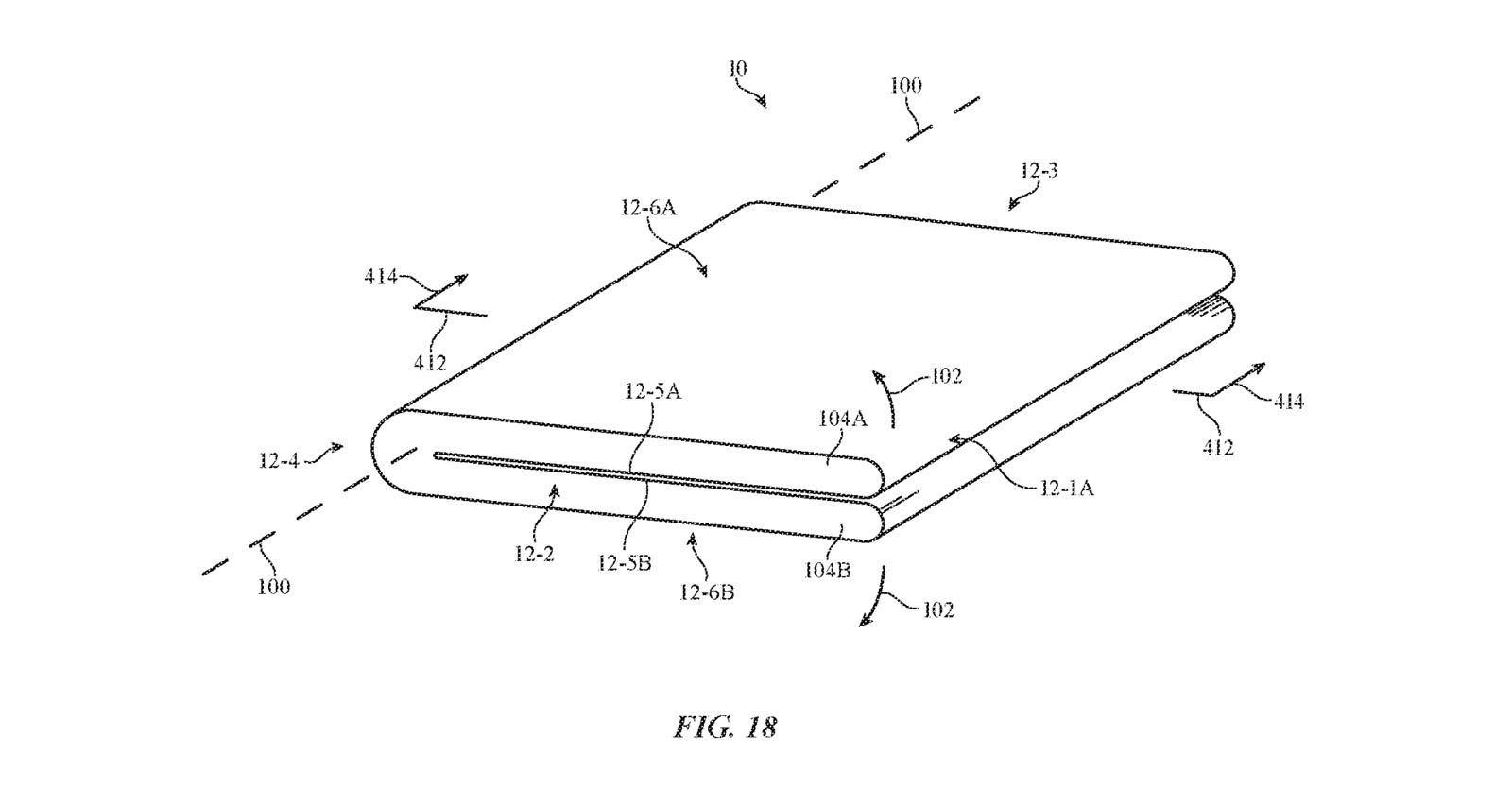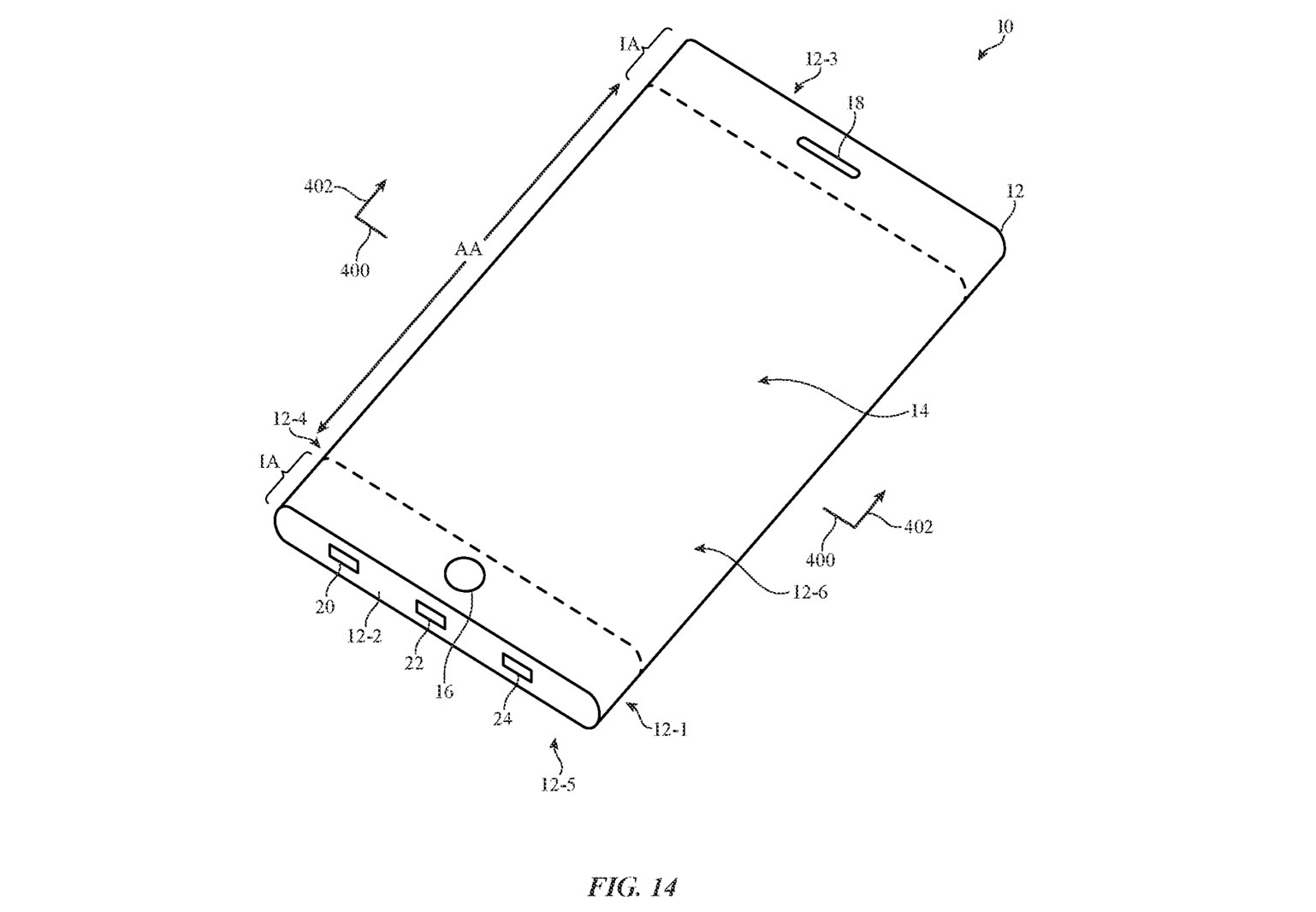The absence of a foldable iPhone from Apple’s lineup is a good reason for Samsung to keep mocking its rival, as if foldable devices are the new norm in the industry. But Apple is confirmed to be working on technology it might use on gadgets with folding displays, whether they’re iPhones or iPads. The latest such discovery comes from a newly found patent. The document details what looks like a foldable iPhone with a wraparound display and capacitive buttons on the sides.
One problem with designing foldable smartphones is that they have to be very thin when they’re unfolded. But they also have to be sturdy, and the frame can’t bend. Plus, the chassis has to provide support to the foldable screen while simultaneously protecting the internal components, including the hinge, from water and dust.
The metal frame also has to feature openings for buttons, including volume and standby rockers. Then there’s the charging port, another cutout in the frame.
How is this relevant to Apple’s new foldable iPhone patent? The technologies Apple Insider discovered in patent 11,579,722 that the USPTO awarded to Apple on February 14th should help with the handset’s durability while improving user control.
The Electronic Devices With Display And Touch Sensor Structures patent describes technology for placing touch sensors practically anywhere on the handset, not just the traditional display. Also, the screen might extend around the phone’s edges, hence the wraparound iPhone design. That’s something Apple has included in other patents over the years, even before Samsung released its first foldable smartphone.
Placing physical buttons on a foldable smartphone isn’t just a problem for the phone’s structural integrity. Those buttons are placed in specific positions. They have to be accessible in two positions on a foldable device: Folded and unfolded.

Apple’s new patent describes tech that might make it easier to control a foldable iPhone. Touch buttons could be placed anywhere on the handset, including the curved sidewalls or the top and bottom of the handset.
Various materials, including opaque and transparent options, might cover these touch buttons. Apple is looking at different materials, including opaque plastic, metal, fiber-composite, ceramics, and more.
The patent also offers use cases for the touch buttons, suggesting the versatility of such a system. For example, a portion of the sidewall might work as a virtual shutter button when the camera is in use. But it could turn into a volume slider or a different slider that fits a particular setting the user wants to control.
Interestingly, the technology would let Apple place touch sensors on the back of the iPhone. This could serve gaming and other applications that could benefit from having buttons on the opposite side of the screen.

Apple’s drawings and descriptions imply a foldable iPhone (or iPad) could use these touch buttons. But Apple could always employ the technology in traditional smartphone designs.
Rumors say the iPhone 15 Pro models will feature solid-state volume and standby buttons. Like the MacBook’s touchpad, these buttons will not move, and haptic feedback will come courtesy of Apple’s Taptic Engines. This tech might be the precursor of the touch buttons Apple describes in the new patent.
Removing physical buttons lets Apple design durable frames that can improve the integrity of the iPhone while potentially making it easier to mass-produce cases. Not having to carve cutouts for physical buttons, SIM card slots, and ports could improve manufacturing.
Yes, rumors say that Apple also wants to remove the iPhone’s port in the future. But that won’t happen with the iPhone 15 generation.








